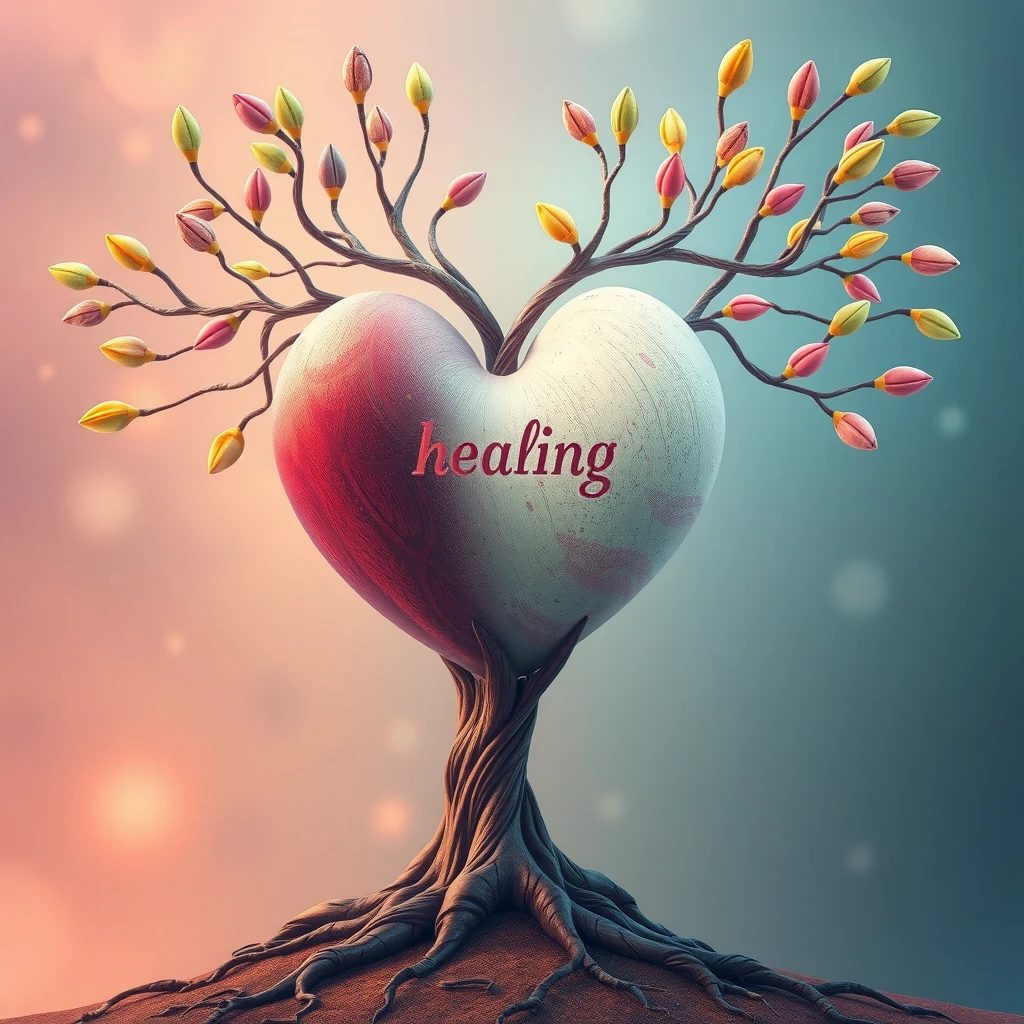
Understanding Toxic Relationships
Decoding the intricacies of toxic relationships requires a nuanced understanding of human dynamics. At its core, a toxic relationship is an emotional minefield where one’s well-being is constantly under siege. These connections, whether romantic, familial, or platonic, share a common thread: they drain rather than nourish the soul.
Recognizing the hallmarks of toxicity is crucial for identifying and addressing unhealthy patterns. Consider these telltale signs:
- Emotional Quicksand: Your partner’s mood dictates the atmosphere, leaving you walking on eggshells.
- Boundary Erosion: Personal space becomes a luxury, with your limits constantly challenged or ignored.
- Trust Tightrope: Promises crumble like sand castles, eroding the foundation of your connection.
- Criticism Cascade: Compliments are rare gems, overshadowed by a constant barrage of fault-finding.
- Manipulation Maze: Your choices are subtly guided by guilt, fear, or obligation, rather than genuine desire.
- Communication Breakdown: Dialogues devolve into monologues, with your voice consistently muted.
- Emotional Neglect: Your feelings are dismissed, leaving you starved for affection and understanding.
These traits manifest in various forms, from subtle disrespect to overt control. The key lies in recognizing that healthy relationships uplift, while toxic ones deplete. By understanding these dynamics, we empower ourselves to cultivate connections that foster mutual respect and personal growth.
Now that we’ve identified toxic relationships, let’s examine the profound impact they can have on our lives.
Recognizing the Impact of Toxic Relationships
The ripple effects of toxic relationships extend far beyond immediate emotional turmoil, seeping into every facet of one’s life. These poisonous connections leave an indelible mark on a person’s psyche, manifesting in ways that may not be immediately apparent.
Emotionally, victims often find themselves trapped in a labyrinth of self-doubt and diminished self-worth. Constant criticism erodes confidence, leaving individuals questioning their judgment and feelings. This emotional neglect can lead to profound loneliness, even when surrounded by others.
Mentally, the impact is equally devastating. Chronic stress from walking on eggshells can rewire the brain, leading to anxiety and depression. The cognitive dissonance of reconciling abusive behavior with moments of affection results in a fractured sense of reality.
Physically, the body bears the brunt of this anguish. Insomnia, weakened immunity, and cardiovascular issues can arise as the body struggles to cope. The negative impact often persists long after the relationship ends.
“Remaining in a toxic relationship is like ingesting small doses of poison daily. It taints your present and corrupts your future, altering perceptions of love, trust, and self-worth in ways that take years to unravel and heal.”
This insidious influence extends to social circles and work life. Isolation and decreased performance can lead to a shrinking world where the toxic person becomes central. Breaking free requires not just separation, but a complete mindset overhaul.
Understanding the impact is crucial, but how do we begin the journey of healing? Let’s explore the first steps towards recovery.
Steps to Begin Your Healing Journey
Embarking on the path to healing after a toxic relationship demands courage and a strategic approach. The journey begins with a pivotal decision: choosing yourself. This act of self-preservation sets the stage for recovery and personal transformation.
First, acknowledge the reality of your situation. This acceptance is crucial for moving forward. Next, create a support network of trusted friends, family, or professionals who can offer guidance and emotional sustenance during this challenging time. Implementing a period of no-contact is often essential. This distance allows you to break free from manipulative influences and gain clarity.
During this time, focus on self-reflection and rediscovering your identity outside the relationship. Engage in self-care practices that heal your mind, body, and spirit. This might include exercise, meditation, or pursuing long-neglected hobbies. Remember, healing is not linear; be patient with yourself as you navigate this process.
To gain perspective, consider the following comparison of relationship dynamics:
| Nurturing Connections | Toxic Entanglements |
|---|---|
| Mutual respect and support | Constant criticism and belittlement |
| Open, honest communication | Manipulation and gaslighting |
| Healthy boundaries | Invasion of privacy and control |
| Encouragement of individuality | Isolation from support systems |
| Shared responsibility | Blame-shifting and victimhood |
| Emotional safety and trust | Fear, anxiety, and insecurity |
| Growth-oriented mindset | Stagnation and regression |
As you progress, seek professional therapy to address deep-seated issues and develop coping strategies. This expert guidance can be invaluable in navigating the complex emotions that arise during healing. Remember, self-care isn’t selfish; it’s a crucial step in reclaiming your life and building resilience against future toxicity.
With these initial steps in mind, let’s dive into one of the most crucial strategies for healing: the no-contact approach.
Embracing No-Contact and Setting Boundaries
Embracing the no-contact strategy acts as a powerful catalyst for healing, akin to hitting the reset button on your emotional checklist. This approach isn’t about ignoring your past; it’s about creating a sanctuary for self-discovery. By severing communication ties, you’re removing yourself from a toxic cycle that trapped you in destructive patterns.
Setting boundaries is like building an invisible shield around your wellness. It’s not about erecting walls, but defining the landscape of your personal freedom. These boundaries serve as guideposts, helping you navigate the complex terrain of post-toxic relationship psychology. They’re not rigid facts, but flexible principles that evolve as you heal.
Consider boundaries as a form of self-care that protects your emotional energy. They’re essential for maintaining mental equilibrium. As you establish these limits, you may encounter resistance from others accustomed to previous scenarios. This is where your newfound strength comes into play, allowing you to stand firm in your commitment to self-preservation.
Remember, setting boundaries is an act of empowerment. It’s about reclaiming control over your life’s narrative and paving the way for healthier future relationships.
As we establish boundaries, it’s equally important to build a strong support system. Let’s explore how to create a network that nurtures your healing journey.
Building a Support System
Building a robust support network is crucial for navigating post-toxic relationship recovery. This network serves as an emotional anchor, providing stability and guidance as you embark on your healing journey. Cultivating diverse supportive connections can significantly accelerate your progress and bolster your resilience. Consider these innovative approaches to constructing your support system:
- Engage in peer-led recovery circles, where survivors share experiences
- Explore virtual reality support groups for immersive healing
- Connect with empathy-trained AI chatbots for 24/7 emotional assistance
- Participate in expressive arts therapy to process emotions nonverbally
- Join adventure therapy programs combining outdoor challenges with counseling
- Attend storytelling events focused on personal transformation narratives
- Volunteer at animal shelters to foster nurturing relationships
To maximize your support network’s effectiveness: 1. Clearly communicate your needs and boundaries to each supporter 2. Regularly assess and adjust your network to align with evolving needs 3. Practice reciprocity by offering support when able, fostering mutual aid 4. Embrace vulnerability as a strength, allowing meaningful assistance With a support system in place, it’s time to focus on nurturing yourself. Let’s delve into effective self-care strategies that can accelerate your healing process.
Healing Strategies and Self-Care Practices
Embarking on a journey of healing after a toxic relationship requires a multifaceted approach to self-care. This process is akin to tending a garden, where nurturing habits become the fertile soil for personal growth. One innovative strategy is the “Healing Hierarchy,” a structured method to prioritize self-care habits.
At the foundation of this hierarchy lies physical well-being. Engage in activities that rejuvenate your body, such as tai chi or forest bathing, which combine movement with mindfulness. These practices not only improve physical health but also foster a deep connection with nature, aiding in emotional repair.
Moving up the hierarchy, we encounter emotional nourishment. Here, expressive arts therapy offers a unique avenue for processing complex feelings. Through painting, sculpting, or even interpretive dance, you can externalize difficult emotions, making them tangible and manageable.
Intellectual stimulation forms the next tier. Challenge your mind with new learning experiences that are worlds apart from your past relationship dynamics. Consider learning a programming language or delving into quantum physics. This cognitive shift can help unlearn toxic patterns and improve your sense of self-efficacy.
At the pinnacle of the hierarchy is spiritual growth. This doesn’t necessarily mean religious practice but rather cultivating a sense of purpose and connection to something greater than yourself. Volunteer for causes that resonate with your values or explore philosophical teachings to find meaning in your experiences.
Remember, healing is not linear. Some days may feel like two steps forward, one step back. Embrace this as part of the process, and be patient with yourself. As you consistently apply these strategies, you’ll notice a gradual but profound shift in your overall well-being. The journey may seem daunting, but each step forward is a victory in reclaiming your life and redefining your personal qualities.
As we cultivate self-care habits, it’s crucial to address our emotional landscape. Let’s explore how to embrace and process our emotions effectively.
Embracing Emotions and Practicing Mindfulness
Embracing emotions is crucial for healing after a toxic relationship. Rather than suppressing feelings, acknowledging them allows for genuine growth. This emotional journey requires patience and self-compassion.
Mindfulness emerges as a powerful tool, offering a positive approach to emotional regulation. By cultivating present-moment awareness, individuals can observe thoughts and feelings without judgment, breaking free from dysfunctional patterns.
Mindfulness is the compass guiding us through post-relationship turmoil, charting a course towards emotional clarity and inner peace. It empowers us to respond thoughtfully rather than react impulsively to our experiences.
This practice helps identify triggers and symptoms of emotional distress, particularly beneficial in managing intense emotions like jealousy or anger that often linger after toxic encounters.
Simple acts like mindful breathing or body scans can significantly impact one’s emotional landscape, fostering a deeper self-connection essential for rebuilding self-esteem often eroded in toxic romance.
Remember, healing isn’t about erasing the past but learning from it. Each mindful moment becomes a step towards reclaiming emotional autonomy and paving the way for healthier future relationships.
With a better understanding of our emotions, it’s time to focus on rediscovering ourselves. Let’s explore how to redefine our identity post-toxic relationship.
Redefining Your Identity and Personal Growth
Emerging from a toxic relationship often leaves one feeling like a blank canvas, ready for reinvention. Imagine yourself as a sculptor, chiseling away past definitions to reveal your authentic self. Begin by crafting a personal manifesto—a declaration of values and aspirations. This document serves as a compass, guiding you through post-relationship confusion.
Embark on a journey of self-exploration through novel experiences. Consider learning a new language or mastering a musical instrument—activities that challenge your personality and expand your horizons. Set audacious goals aligned with your newfound freedom. Perhaps it’s time to pursue that career change or embark on a solo adventure. These aspirations act as beacons, illuminating the path forward and helping you avoid falling back into old patterns.
Remember, redefining your identity isn’t about erasing your past but integrating it into a more evolved version of yourself. Embrace the lessons learned; they’re stepping stones to resilience. As you navigate this transformative journey, be patient—personal growth is a marathon, not a sprint.
As we embark on this journey of self-discovery, professional guidance can be invaluable. Let’s explore how seeking help can further support our healing process.
Seeking Professional Help and Therapy
Embarking on the path to healing often requires professional guidance. A skilled therapist can illuminate hidden signs of trauma and provide a roadmap for recovery. Unlike well-meaning friends or family, therapists offer unbiased perspectives, helping you navigate complex emotions that linger after a toxic relationship ends.
When seeking a therapist, consider their expertise in relationship dynamics and trauma recovery. Look for professionals versed in cognitive-behavioral therapy or dialectical behavior therapy, as these approaches are particularly effective in addressing the aftermath of controlling relationships. Don’t hesitate to “interview” potential therapists to ensure their methods align with your needs.
Group therapy can be a powerful complement to individual sessions, offering a sense of community and shared experience. These settings often reveal that your struggles aren’t unique, which can be incredibly validating. For those hesitant about traditional therapy, online platforms now offer accessible alternatives, allowing you to connect with professionals from the comfort of your home.
Remember, seeking help isn’t a sign of weakness—it’s a courageous step towards reclaiming your life. A skilled therapist can help you redefine your sense of self, separate from the toxic dynamics of your past marriage or relationship. They can guide you in setting healthy boundaries and recognizing red flags in future interactions.
Therapists can also provide valuable advice on handling post-relationship depression and navigating the complexities of dating after a toxic experience. They offer tools to fix communication patterns and address problems that may have become ingrained during your previous relationship.
With these tools for healing in place, let’s look forward to building healthier relationships in the future.
Moving Forward: Building Healthy Relationships
Venturing into new relationships after toxic experiences requires a renewed perspective and self-awareness. Recovery equips us with valuable insights, transforming our approach to love and companionship. Let’s explore cultivating healthier connections while honoring our growth.
| Past Toxic Patterns | New Healthy Relationship Behaviors |
|---|---|
| Constant criticism | Constructive feedback and appreciation |
| Emotional manipulation | Open, honest expression of feelings |
| Disregard for personal space | Respecting individual needs and boundaries |
| Jealousy and possessiveness | Trust and encouragement of autonomy |
| Blame-shifting | Taking responsibility for actions |
Embracing these new behaviors requires patience and practice. It’s essential to recognize that depressed feelings or doubts may surface as you navigate unfamiliar territory. These are normal signs of growth, not reasons to retreat.
When dating, prioritize clear communication about your past experiences and current boundaries. This transparency fosters mutual respect. Be vigilant for warning signs that might indicate a narcissist or toxic types of people, but avoid projecting past hurts onto new connections.
Remember, a healthy relationship isn’t about finding someone to fix you or vice versa. It’s about two whole individuals choosing to share their lives. If you encounter a problem, approach it as a team, seeking solutions together rather than playing the blame game.
As you build new relationships, be mindful of your own attitude and behaviors. Regularly check in with yourself: Are you falling into old patterns? Are you maintaining a balanced life outside the relationship? These self-reflections help prevent codependency and ensure you’re not ignoring your own needs.
Forgiveness plays a crucial role in moving forward. This doesn’t mean excusing past disrespectful behavior, but rather releasing its hold on your present. By letting the past go, you allow new, positive moments to come into your life.
As we conclude our exploration of healing from toxic relationships, let’s reflect on the transformative journey ahead.
Conclusion: Embracing a New Chapter
As you conclude this healing journey, embrace your unique path. Celebrate small victories and newfound characteristics of strength. Your resilience shines through examples of overcoming. Trust that better things await, even in unhappy moments. Redefine your definition of happiness.
Now that we’ve covered the essentials of healing, let’s address some common questions that often arise during this journey.
Frequently Asked Questions About Healing from Toxic Relationships
Can I remain friends with my ex after leaving a toxic relationship?
Maintaining friendship with an ex after a toxic relationship is fraught with tense complexities. Prioritizing personal healing often necessitates a clean break, allowing space to remove oneself from codependent dynamics and escape lingering emotional entanglements. The decision ultimately depends on individual circumstances and recovery progress.
What are the first signs that I'm healing from a toxic relationship?
The first signs of healing often emerge subtly. Increased self-awareness helps recognize once-normal patterns as wrong. Emotional stability grows; you no longer hate yourself or ignore your needs. Gradually, you feel less broken, more empowered to survive without toxic influences. This journey transforms your outlook on relationships.
How do I regain trust in future relationships after experiencing toxicity?
Rebuilding trust post-toxicity requires balance. Acknowledge past wounds without defining future couples. Practice gradual vulnerability, setting boundaries. Seek respectful partners, avoiding failing communicators. Trust is earned through actions, not empty phrases. While healing, watch for disorder signs in new relationships. Cultivate self-trust as the foundation for healthy connections.
Is it normal to miss my ex even if the relationship was toxic?
Missing a toxic ex is a complex emotional paradox. The brain often clings to familiar patterns, even harmful ones. This phenomenon, called "trauma bonding," can make individuals yearn for their former spouse despite the relationship's toxicity. It's part of healing, reconciling past experiences with the breakup reality.
How can I prevent falling into another toxic relationship in the future?
To prevent falling into another toxic relationship, cultivate self-awareness and establish firm boundaries. Recognize red flags early by understanding the signs of unhealthy dynamics. Be cautious of those who consistently blame others or neglect their duties. Trust your instincts and prioritize mutual respect in all relationships.
Is forgiveness important in healing from a toxic relationship?
Forgiveness in healing from toxic relationships is a journey of releasing resentment for personal peace. It's a sign of strength, not excusing harm. This process liberates emotional energy, fostering self-growth. Former lovers become lessons, not burdens. Forgiveness doesn't mean reconciliation; it's breaking free from the victim syndrome.

Jeffrey Young is an American psychologist renowned for developing schema therapy. He founded the Schema Therapy Institute and is a leader in the field of cognitive behavioral therapy. Young has authored several influential books, including Schema Therapy for professionals and Reinventing Your Life for the general public.







